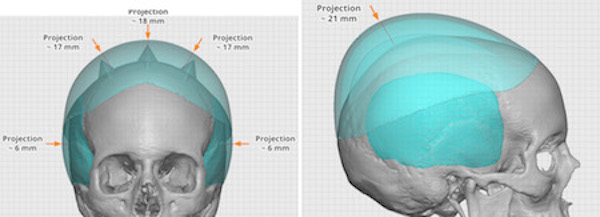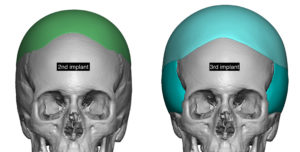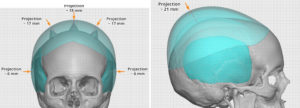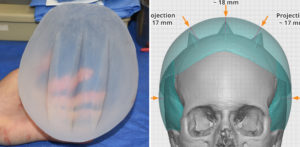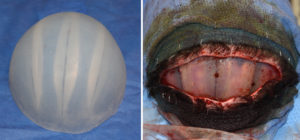Background: Any form of skull augmentation must consider the stretch of the scalp to accommodate it. The scalp is a naturally tight soft tissue covering as it is stretched over a large hard convex surface and there is no functional purpose in it being loose. Once elevated from its bony attachments across the top of the head, some laxity of the scalp does occur but there are limits. The five layers of the scalp give it a dense structure which is much more resistant to stretching than if it was a thinner skin only construct.
The consideration of how much the scalp will stretch has great relevance in the placement of custom skull implants. Such aesthetic implants are unique due to their potentially large surface area of coverage and the ability to place them through small scalp incisions. Beyond getting them placed through the incision, one wants to be able to get the incision closed…and preferably without undue tension. The most valuable preoperative design feature of custom skull implants that I use to judge what is safe t place is its volume. For most patients one should stay with an implant volume that is not greater than 125cc to 150ccs.
When the aesthetic requirement of a custom skull implant is larger, a first stage scalp expansion is needed. This is understandably not appealing to some patients and they may elect to go with a smaller implant size that will safely fit. They can then come back later to have a larger skull implant placed as the first implant has had a tissue expander effect. This is what I call a delayed two stage skull augmentation procedure. In some cases this is deliberate but most of the time it is unintentional. They thought they would be satisfied with a smaller implant but eventually decide they weren’t. I have learned that one can get an increased volume of 50% to 100% greater with the second skull implant. But what if one wanted to get a third skull implant, how much more volume could be added?
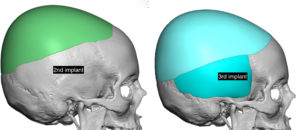
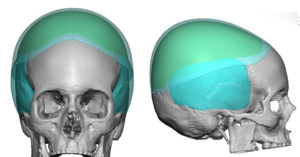
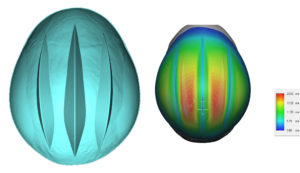
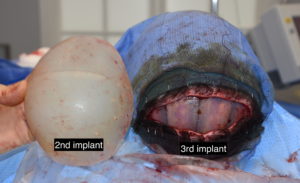
The posterior temporal implants were placed through incisions behind the ear in the submuscular pocket location.
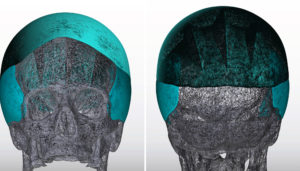
Case Highlights:
1) A second skull implant can usually double the size of the first implant. But a third custom skull implant can only have its volume about 30% to 40% more than the second implant.
2) The placement of anteroposterior wedges in large custom skull implant designs enable it to be rolled for insertion without increasing scalp incisional length.
3) Once the top of the head becomes enlarged sufficiently, consideration needs to be given to head widening as well to maintain head shape proportions.
Dr. Barry Eppley
Indianapolis, Indiana

